Learn
Motives
Motives for War
Following expansionist efforts in Hawaii, Americans were eager to further expand; however, the powerful imperial nations of Europe had already claimed most of the land around the globe. Nevertheless, the United States growing in industrial and military might, realized another opportunity to acquire land was by taking land already held by other empires. It was also an opportunity to enforce the Monroe Doctrine, a foreign policy Statement issued by President Monroe in 1823 stating that the U.S. would oppose any intervention by European nations to control nations in the Western Hemisphere, that had been basically ignored for years.

Spain's Weakening Empire
Spain's once great empire and control over the Central and South America was weak. Spain's colony of Cuba was the most logical imperialist choice for the United States. Its people had been in open rebellion against Spanish rule since 1895, the Spanish navy was weak, and a defeat of Spain opened the possibility for several new territories. Aiding the choice was the fact that the American people were largely supportive of a war with Spain.
Spain sent troops under General Weyler to put down the rebellion. Over 200,000 Cubans died of disease and malnutrition in concentration camps set up by the Spanish for supporters of independence.
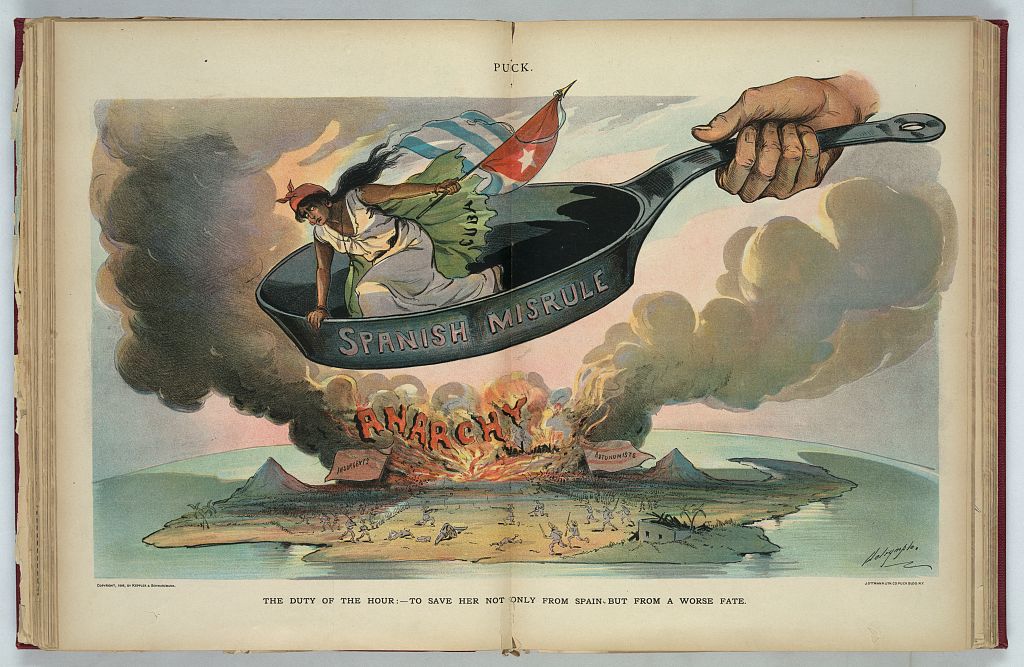
Yellow Journalism
Over the years hostility towards Spain steadily increased as Americans were persuaded by yellow journalism, which is the style of newspaper reporting that emphasizes sensational news, accounts of Spanish abuses of the Cuban people.
William Randolph Hearst and Joseph Pulitzer were the most well-known publishers who sensationalized stories about Spanish misrule in Cuba in a competition to sell more newspapers. They even sent reporters, artists, and photographers to Cuba to cover the atrocities of war.
When Hearst received word from one of his photographers that "There is no war," he replied, "You furnish the pictures, I'll furnish the war."
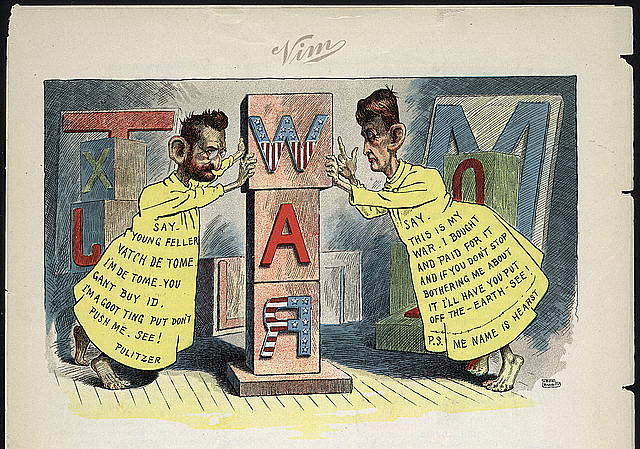
Final Steps to War
Tensions between the United States and Spain worsened in February 1898 when William R. Hearst published a letter written by the Spanish minister to the U.S., Dupuy De Lome. The de Lome letter was insulting to President McKinley, which caused a public outcry among Americans that led to an apology by Spain and the recall of de Lome.
However, the final push for war came after the sudden explosion and sinking of the U.S.S. Maine, an American battleship on patrol, in Havana Harbor on February 15, 1898. Despite no evidence to prove it, Americans became convinced that the Spanish were to blame for the sinking of the Maine and the deaths of 260 of the sailors on board.
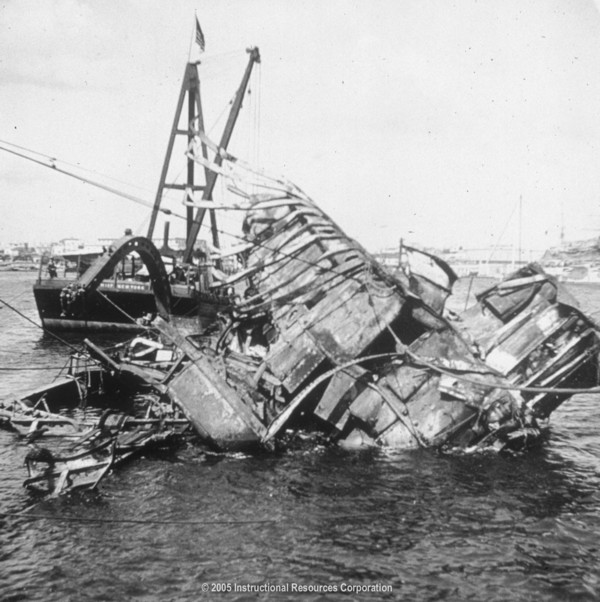
Remember the Maine
After a hasty investigation, blame for the explosion was assigned to Spain. Cries of "Remember the Maine!" were heard across the country as Americans lobbied lawmakers retaliate against Spain. Shortly thereafter, in April 1898, the United States declared war on Spain thereby beginning the Spanish-American War.
Read Remember the Maine to learn more about the causes of the Spanish-American War.
Events
The Spanish-American War
Although Cuban events drew the United States into war, U.S. military efforts were not confined to the island. American military forces took advantage of the opportunity and attacked other Spanish held territories including the Philippines, Puerto Rico, and Guam.
The Spanish-American War is often referred to as the "Splendid Little War" because it lasted a mere four months. Despite being ill-prepared militarily, the U.S. claimed victory, transferring power from Spain, the "old guard," to a new power, the United States.

Fighting in Cuba
Before passing President McKinley's request for a declaration of war, Congress passed the Teller Amendment, making it clear to other nations that the United States would fight for Cuban independence and had no interest in colonizing Cuba.
The most well-known battle of the Spanish-American War took place in Cuba at San Juan Hill. The Rough Riders, a volunteer regiment organized by Theodore Roosevelt, the Assistant Secretary of the Navy who resigned his post to lead the Rough Riders, charged San Juan Hill with the support of two African-American regiments to help contain Spanish forces in Santiago harbor. The glory received by Teddy Roosevelt in his role leading the Rough Riders launched him to fame and a career in politics.

Fighting in the Philippines
While the most well-known battle of the Spanish-American War took place in Cuba, the first military action took place in the Philippines. On May 1, 1898. the American navy under the command of Admiral George Dewey soundly defeated a major portion of Spain's Pacific fleet at the Battle of Manila Bay. The American steel ships were able to triumph over the wooden ships of the Spanish fleet in approximately seven hours; however, Spain held control of the Philippines until the U.S. army was equipped and sent to the Pacific.
Read The Spanish-American War and Its Consequences to learn more about the events in Cuba and the Philippines.
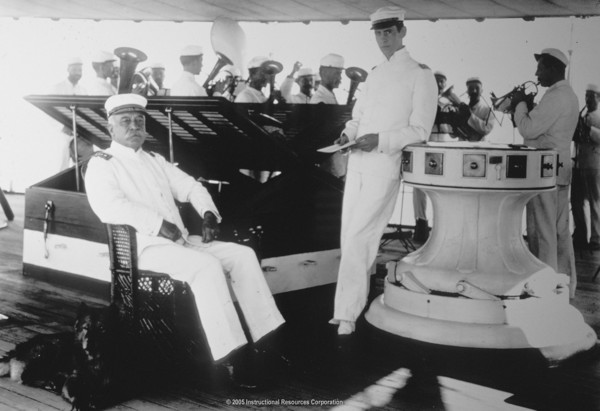
Treaty of Paris
As part of the terms of the Treaty of Paris, signed to end the war, the United States was generously awarded the islands of Guam, Puerto Rico, and the Philippines as unincorporated territories, while Spain received 20 million dollars for their losses. Although Cuba received its independence, the United States feared other European nations might target the new nation.
Therefore, in 1901, the Platt Amendment made Cuba a legal protectorate, which was an agreement between a strong state to protect and sometimes partly control a weaker state, of the United States, stating that Cuba could not align itself with other foreign nations and that the U.S. could send troops to intervene. The U.S. was also given a lease on a naval base at Guantanamo Bay that remains today.
Following the war, in 1916 The U.S. passed the Jones Act which allowed the Philippines to elect their own legislature. Finally in 1946, after World War II, independence was achieved for the Philippines.
Rebellion in the Philippines
While the Filipino people assumed they would receive their independence after Spain lost control, President McKinley thought they were too uncivilized to govern themselves and ordered the islands to be placed under military control.
The Philippines rebelled against U.S. imperialism and engaged in a hard-fought battle for independence. The Philippine Insurrection, led by Emilio Aguinaldo, lasted approximately three years. Fighting, including guerrilla warfare by the Filipino rebels and brutal tactics by the U.S. soldiers, cost 4,000 American lives.

Lasting Effects of the War
The emergence of Teddy Roosevelt as a national figure during the Spanish-American War and the exchange of territory at the end of the conflict each left a lasting effect on the United States and the world at large for generations to come.
While the U.S. was victorious in the conflict, many of its new territories were less than hopeful about their future prospects under American control. Nevertheless, the United States managed to expand its empire and in so doing, became one of the world's newest powers; one that would be called upon to lead future war efforts in World War I and World War II.
Joseph Wheeler
Have you ever heard of Joe Wheeler State Park, Wheeler Lake and Dam, or the Wheeler National Wildlife Refuge? These Alabama landmarks were named in honor of Alabamian Joe Wheeler.
Joseph Wheeler served the state in several different capacities. He was the leader of an Alabama regiment during the Civil War and later a longtime U.S. Congressman representing the state. He is one of only two Confederate Generals buried in Arlington National Cemetery.
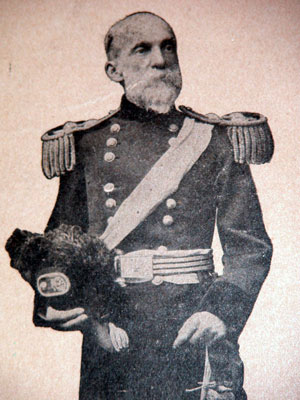
Joseph Wheeler also served as a major general during the Spanish-American War. Actually, he volunteered for service, even though he was over the age of 60! He was formally charged with command over the cavalry division, including the famed "Rough Riders" regiment and the future president Theodore Roosevelt. Wheeler was later commissioned to scout the Cuban area in preparation for a U.S. attack.
During the war Wheeler participated in several important battles. He helped lead the attack of the first major battle of the war. Despite falling ill after the battle, Wheeler continued to fight and became one of the lead commanders of the "Rough Riders" in the Siege of Santiago. At the conclusion of the war, Wheeler served as a member of the peace commission.